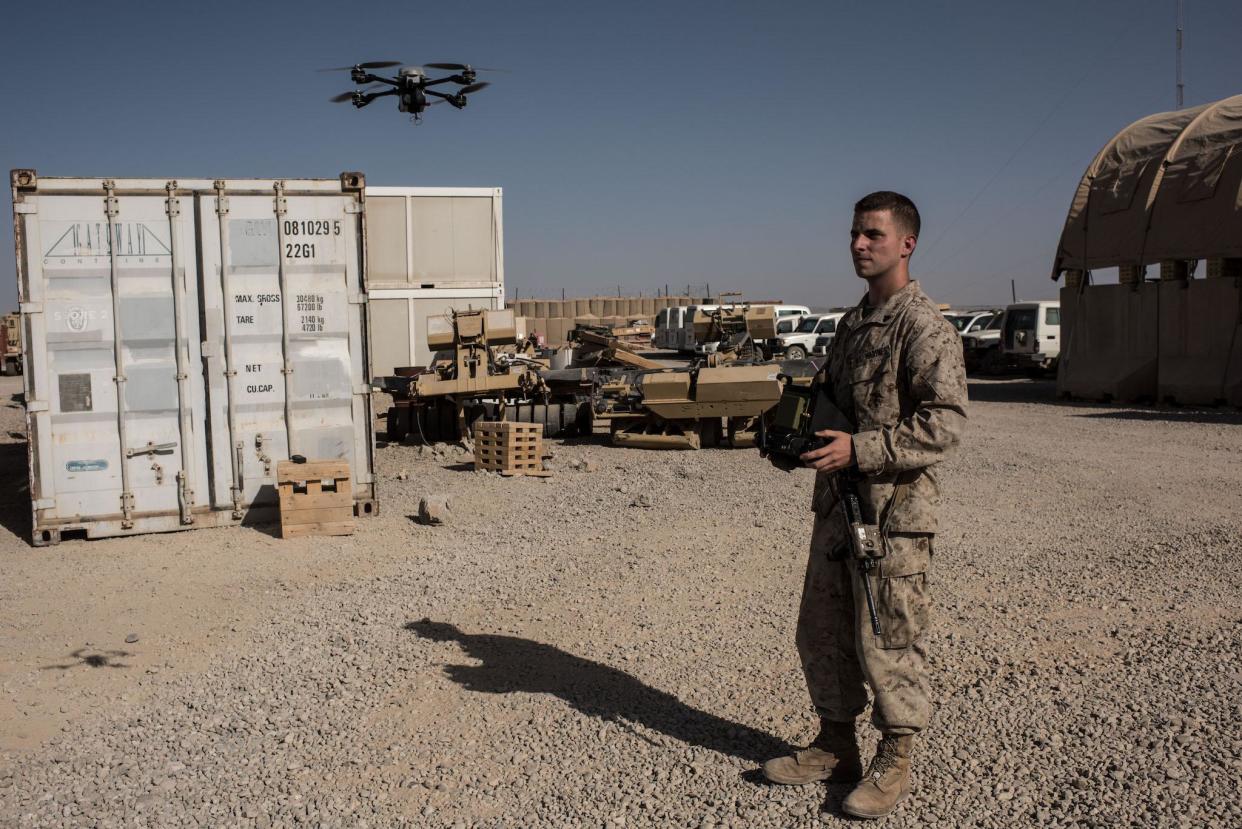Trump under fire for plans to scrap Obama-era restrictions on drone strikes

Donald Trump’s administration is said to be readying to dismantle some Obama-era limits on drone strikes and commando raids – a policy change that human rights groups assert would result in more civilian deaths.
The rules Mr Trump’s national security advisers have reportedly proposed to roll back are expected to lay the foundation for more counterterrorism missions against Al Qaeda, Isis and other jihadists.
The proposed changes would apply in countries such as Yemen, Somalia and Libya – where the US has targeted Islamist militants outside of regular combat for years – and could pave the way for expanding drone strikes to other places in Africa, Asia and the Middle East where terrorists operate, the New York Times reported.
According to the Times, the Trump administration would expand the targets of kill missions by the military and CIA – now generally limited to high-level militants believed to pose a “continuing and imminent threat” to Americans – to include foot-soldier jihadists with no special skills or leadership roles. Additionally, proposed drone attacks and raids would no longer undergo high-level vetting, the Times reported.
“Removing high-level vetting and the requirement that the targeted individuals pose a threat to Americans opens a wide door to increasing civilian casualties,” Letta Tayler, a terrorism and counterterrorism researcher at Human Rights Watch, told the Independent.
In May 2013, former President Barack Obama imposed the rules on kill-or-capture operations by the military or CIA outside war zones in Afghanistan, Iraq and Syria. A dozen human rights and civil liberties groups sent a letter to Mr Trump's national security adviser, HR McMaster, this year asking him to tighten these existing standards for targeting terrorists in these grey-areas.
The reported loosening of Obama-era rules on drone strikes and commando raids is the latest indication of Mr Trump following through on his promise to give American armed forces more authority to target terrorists. Mr Obama had insisted that high-risk counterterrorism operations be used sparingly and only after top officials across the government reviewed them.
“The killers need to know they have nowhere to hide, that no place is beyond the reach of American might and American arms,” Mr Trump said during a speech in August outlining his security policies for Afghanistan and the rest of South Asia. “Retribution will be fast and powerful, as we lift restrictions and expand authorities in the field.”
One official told the Times that Mr Trump’s replacement rules should be viewed as similar to Mr Obama’s but less bureaucratic, as drone operators and commanders would face less internal obstacles in order to launch specific strikes or raids.
According to international law governing war or self-defence, it is legal to knowingly kill some civilians as an incidental consequence of attacking a legitimate military target, as long as the civilian deaths are deemed necessary and proportionate.
However, many human rights groups disagree that war zone rules should apply to drone strikes outside conventional battlefields.
“Under pressure from rights groups, Obama made important but insufficient improvements to his lethal drone-strike programme,” Ms Lettis said. “[The Trump administration’s] proposal threatens to unravel many of those reforms at the expense of innocents’ lives. The result could be not only unlawful and immoral, but also short-sighted. Alienating local populations risks handing a recruitment card to groups like Isis. That strategy may help the US win the short-term battle but not the long war.”
While administration officials are said to have agreed to keep in place the requirement of “near certainty” that no civilian bystanders will be killed, members of human rights and civil liberties groups said there is no guarantee that this policy will be followed.
“It is little comfort that the ‘near certainty’ standard against civilian deaths would be maintained when we do not know how the administration is defining who is a civilian,” Hina Shamsi, director of the American Civil Liberties Union’s National Security Project, told the Independent.
“The number of civilians killed by the Trump administration in and outside war zones is already at record highs, and these proposed changes would only cause greater harm,” she said.
The Pentagon reported in April that more than 350 civilians were killed as a result of US airstrikes against Isis in Iraq and Syria from August 2014 to March 2017.
Daniel Mahanty, a senior advisor to the US Programme for the Center for Civilians in Conflict, said that if the Trump administration’s changes to Obama-era limits leads to an “even greater expansion of the geography in which strikes take place, civilians could pay a price”.
“Other countries are acquiring remotely piloted aircraft systems, and may use US practice as precedent for their own targeted killings,” Mr Mahanty said. “Ideally, new guidance would have strengthened, rather than further weakened, standards that were already questionable.”

 Yahoo News
Yahoo News 
